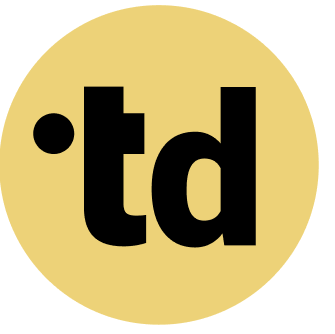Key Takeaways
Workload management is the process of distributing work to maximize team performance and well-being, addressing the fact that 71% of German employees experience work-related stress.
Teams with clear roles and responsibilities are significantly more efficient, and overall performance can increase by up to 25%.
Effective workload management is crucial for hybrid teams (humans and AI agents), helping to balance flexibility with performance and successfully integrate AI agents into workflows.
In the quest for high performance, many teams find themselves battling a familiar villain: chaos. Unclear roles, overwhelming tasks, and the fatigue of constant change lead to burnout, with nearly 22 percent of European employees reporting its symptoms. This is where the Team Architect-the hero of our story-steps in. The challenge is immense, but the solution is clear: effective workload management. It's not about just assigning tasks; it's about creating a system where clarity, purpose, and productivity flow. This article explores how to define and implement a workload management strategy that turns overloaded teams into empowered, efficient units ready to conquer any challenge.
Practical Framework for Team Architects
As a Team Architect, you can apply these principles to your organization:
- Map Current State: Document existing roles and responsibilities using a tool like teamdecoder.
- Identify Gaps: Where are roles unclear? Where do humans and AI agents overlap?
- Define Clear Boundaries: Specify which tasks are handled by humans vs. AI agents.
- Create Accountability: Assign clear decision rights for each role.
- Iterate and Improve: Continuously refine based on team feedback.
Confronting the High Cost of Team Overload
The modern workplace is a high-stakes environment where many of employees report a significant increase in their workload over the last year. This isn't just a feeling of being busy; it's a systemic issue where mental health impairment has become the number one reason for inability to work in Germany. For Team Architects, this data paints a stark picture of heroes facing an onslaught of demands without the right defenses. The consequences are severe, as disengagement can cost a company over one billion dollars in lost value in just five years.
When roles are ambiguous, a condition affecting nearly half of all employees, the entire system suffers. This lack of clarity is a direct contributor to burnout, which stems from chronic, unmanaged stress and affects almost one in five workers across Europe. The pressure to deliver is the top stress trigger, a direct result of poor workload distribution. This environment doesn't just hurt morale; it directly impacts how you measure team success. The stage is set for a transformation, moving from reactive firefighting to proactive design.
Sweet Teams Are Made of This: A New Definition
So, what is workload management? It's the art and science of distributing and managing work across a team to maximize performance and maintain well-being. Think of it less as a rigid spreadsheet and more as a dynamic system for channeling your team's energy. It involves forecasting, planning, and monitoring work in a balanced way, ensuring that the 80 percent of time spent on collaboration is effective. The primary goal is to match the right tasks to the right people at the right time, preventing the overload that many European employees experience.
Effective workload management transforms ambiguity into action. When employees have clear roles, they are more efficient and a significant portion more effective. This isn't about micromanagement; it's about creating a framework for success. By defining responsibilities and addressing bottlenecks, managers ensure teams work cohesively toward shared goals. This clarity is the foundation for a resilient team structure, turning the tide on workplace stress and setting up the next phase of strategic implementation. You can try teamdecoder for free to see how it works. Learn more about workload management tools that can help.
Architect Insight: A Framework for Balanced Teams
For Team Architects, designing a workload management system requires a clear blueprint. It starts with visibility-understanding your team's current capacity and the demands of upcoming projects. This process helps operationalize your strategy, connecting high-level goals with the day-to-day tasks required to achieve them. A German pilot study of a four-day work week found that performance remained stable or even improved because teams focused on ef Over many participating companies achieved this by streamlining processes and reducing distractions.g distractions.
Our Playful Tip: Start with a "task census" to map out everything your team is working on for two weeks. This simple audit often reveals surprising imbalances and opportunities for quick wins in your organizational development. It provides a baseline for better workload planning.
Deep Dive: A key element is building a hybrid team (humans and AI agents) governance model that accounts for both human and AI agents. This requires defining new roles and responsibilities for tasks like data supervision and algorithm training. To build a robust system, follow these steps:
- Assess current workloads and individual capacities.
- Define clear roles and responsibilities for every team member.
- Prioritize tasks based on strategic importance, not just urgency.
- Implement a transparent system for tracking progress.
- Schedule regular check-ins to adjust workloads proactively.
- Integrate AI agents by defining their specific tasks and interaction protocols.
This structured approach provides the clarity needed to move from theory to impactful results.
From Chaos to Clarity: The Measurable Impact
Implementing a clear workload management system delivers tangible returns. Organizations with high role clarity see a some increase in overall work performance. This jump in productivity comes from eliminating duplicated efforts and empowering employees to focus on high-impact activities. Furthermore, 75 percent of employees with clear roles report being more passionate about their jobs. This heightened engagement is critical, as highly engaged teams drive a increase in profitability.
The benefits extend beyond pure performance metrics. Clear roles and balanced workloads are powerful tools for change management, making teams more adaptable during transformations. When people understand their contribution, they feel more secure and valued, which is crucial for retention. This clarity helps prevent employee burnout by giving them control over their work. The result is a resilient, high-performing team ready to scale, which is especially important for managing a dedicated task force. This newfound stability allows for the integration of more complex elements, like hybrid human-AI teams.
Make Bots and Humans Click in Hybrid Teams
The rise of hybrid teams, blending remote and in-office work, adds a new layer to workload management. A key challenge is balancing flexibility with performance, ensuring that distributed teams stay in sync. Without clear protocols, it's easy for communication to fracture and for remote employees to feel disconnected. This is where defining roles and responsibilities becomes even more critical, providing a shared map for Many people to follow, regardless of their location. It's a core component of new leadership in a modern workforce.
Integrating AI agents into these hybrid teams adds another dimension. Effective AI agent integration requires treating them as team members with defined roles. Their workload-whether it's data analysis, report generation, or customer support-must be managed and balanced alongside human tasks. Here are some strategies for success:
- Define clear interaction points between humans and AI.
- Automate routine tasks to free up human capacity for strategic work.
- Establish protocols for quality control and AI performance monitoring.
- Train the team on how to collaborate effectively with their new digital colleagues.
This human-in-the-loop approach ensures that technology enhances team capabilities rather than creating new bottlenecks, paving the way for a truly future-ready organization. For more on this, explore how to use proactive workload management.
Teams Just Wanna Have Fun (and Clarity)
The hero's journey for any team is to move from the chaos of overload to the clarity of flow. Effective workload management is the effective tool that makes this transformation possible. It addresses the root causes of stress that many German employees face, turning frustration into focus. By systematically balancing tasks and defining roles, Team Architects build resilient structures where people can do their best work. This isn't just about efficiency; it's about creating a sustainable environment where teams thrive.
The result is a workplace where change feels less like a threat and more like an opportunity. With clear roles, teams are empowered to take on challenges from scaling operations to integrating new technologies. They have the structure and support needed to innovate and succeed. This clarity ensures that every member understands their value, creating a stronger, more cohesive unit. See our pricing.
Try teamdecoder for free - shape your team and make change feel like play!
More Links
Federal Statistical Office (Destatis) provides a press release likely containing statistical data relevant to the German economy or labor market.
The Ifo Institute discusses a survey finding that the majority of companies see equal productivity in the office and in home office settings.
A publication from the Weizenbaum Institute likely focuses on the digital society and its impact.
The German Federal Ministry of Labour and Social Affairs (BMAS) offers a research report (FB442) concerning the quality of work.
The German Social Accident Insurance (DGUV) highlights the benefits and importance of occupational safety and prevention measures.
A press release from Fraunhofer IAO (Institute for Industrial Engineering) states that productivity and home office are not mutually exclusive.
PwC (PricewaterhouseCoopers) provides a trend barometer on people management, likely covering current trends and challenges in human resources and workforce transformation.
Gallup offers a report on the Engagement Index for Germany, measuring employee engagement levels and their impact on business outcomes.
FAQ
What is the primary goal of workload management?
The primary goal is to balance the amount of work with the available capacity of the team. This optimizes resource utilization, improves productivity, prevents employee burnout, and ensures timely project completion.
Can workload management improve team profitability?
Yes. By increasing efficiency and ensuring efforts are focused on high-priority tasks, it boosts productivity. According to Gallup, highly engaged teams-a direct result of balanced workloads and clear roles-can increase profitability by 23 percent.
How does teamdecoder help with workload management?
teamdecoder provides tools to visualize team structures, define roles and responsibilities, and map out workflows. This clarity is the foundation of effective workload management, helping Team Architects design and scale balanced, high-performing teams.
Is workload management only for large enterprises?
No, it is beneficial for organizations of all sizes. Startups can use it to scale roles effectively from day one, while SMEs and enterprises use it to manage complex reorganizations, hybrid teams (humans and AI agents), and change management initiatives.
How are AI agents factored into workload management?
AI agents should be treated as team members with specific roles. Their tasks, such as data processing or automated reporting, must be defined and integrated into the team's overall workflow to ensure seamless collaboration between humans and AI.
Where can I find templates for defining roles?
teamdecoder offers resources like our DEI, sustainability, and customer-centricity templates to help you get started. You can also download our 'Dream Team Builder' guide for a structured approach to role definition.





